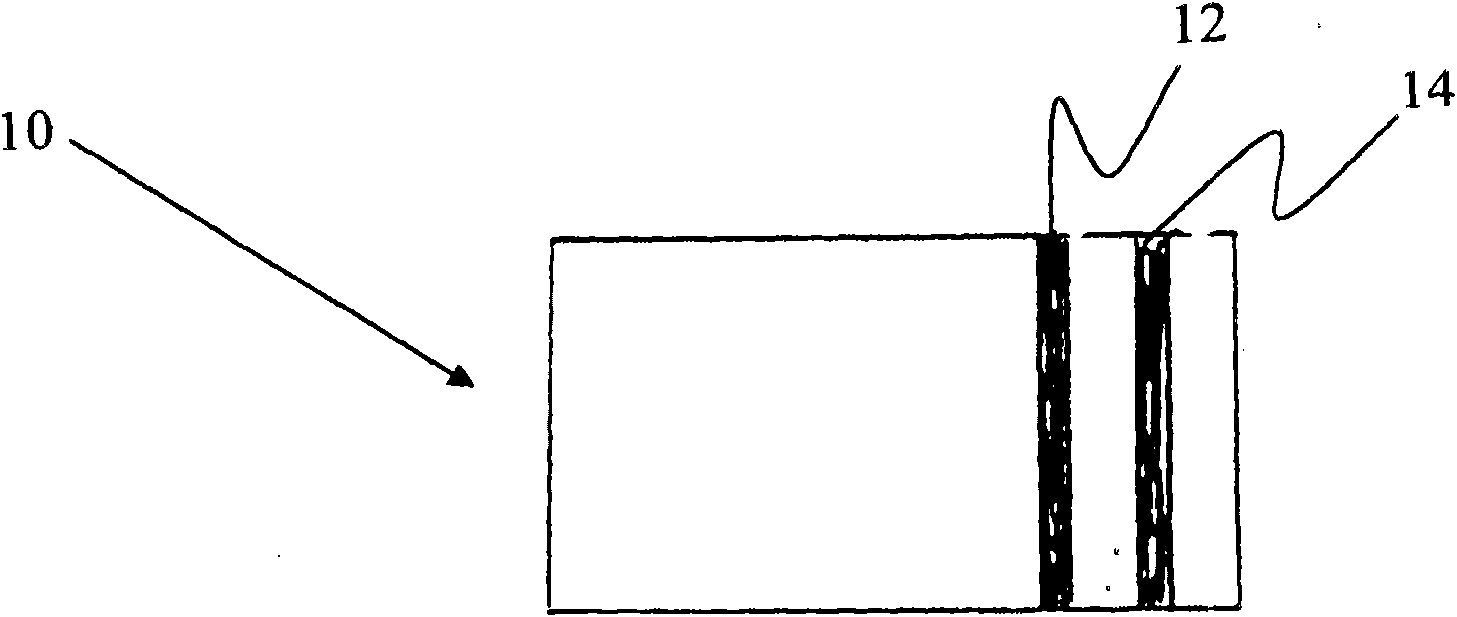Detection of formaldehyde in urine samples
一种甲醛、尿样的技术,应用在尿样中甲醛的检测领域,能够解决费时、医疗提供者不容易获得资源或设备等问题
- Summary
- Abstract
- Description
- Claims
- Application Information
AI Technical Summary
Problems solved by technology
Method used
Image
Examples
Embodiment 1
[0094] To determine the ability of the basic fuchsin-sulfuric acid reagent to indicate the presence of formaldehyde.
[0095] Formaldehyde aqueous solutions (mg / ml) were prepared at the following concentrations: 5.625, 11.25, 22.5, 45, 90, 180, and 360 mg / ml (corresponding to 0.056, 1.125, 2.25, 4.5, 9.0, 18.0, and 36.0%, respectively). 50 μl of formaldehyde solution of each concentration was placed in the microtiter well. In addition, water without any formaldehyde was placed in a microtiter well as a control.
[0096] In addition, 150 μl of a 2.0 mg / ml ethanol stock solution of basic fuchsin was mixed with 2.0 ml of water to prepare a basic fuchsin-sulfuric acid reagent. This produced a red solution. The mixture was then mixed slowly with 2N sulfuric acid until the red solution became colorless.
[0097] Next, 250 μl of basic fuchsin-sulfuric acid reagent was added to each microtiter well containing formaldehyde and mixed for at least about 2 minutes. Each plate was subs...
Embodiment 2
[0099] It was determined that the basic fuchsin-sulfuric acid reagent did not have the ability to indicate the presence of other aldehydes.
[0100] Aqueous solutions of aldehydes were prepared at the following concentrations: 1.0 mg / ml acetaldehyde, 15.0 mg / ml isovaleraldehyde, 15.0 mg / ml phenylacetaldehyde, and 5.0 mg / ml o-phthalaldehyde. Add 50 μl of each concentration to microtiter wells. Basic fuchsin-sulfuric acid reagent was prepared as described above and 250 [mu]l was added to each microtiter well. No significant color change was observed in any well.
Embodiment 3
[0102] Determines the ability of the basic fuchsin-sulfuric acid reagent to immobilize or coat a substrate.
[0103] exist The plates were coated with basic fuchsin-sulfuric acid reagent prepared as described above. Air dry the panel. Various concentrations of formaldehyde were prepared and applied to different parts of the board. A visible pink color change occurred in a dose-related manner at the site where the formaldehyde solution was applied.
PUM
 Login to View More
Login to View More Abstract
Description
Claims
Application Information
 Login to View More
Login to View More - R&D
- Intellectual Property
- Life Sciences
- Materials
- Tech Scout
- Unparalleled Data Quality
- Higher Quality Content
- 60% Fewer Hallucinations
Browse by: Latest US Patents, China's latest patents, Technical Efficacy Thesaurus, Application Domain, Technology Topic, Popular Technical Reports.
© 2025 PatSnap. All rights reserved.Legal|Privacy policy|Modern Slavery Act Transparency Statement|Sitemap|About US| Contact US: help@patsnap.com



